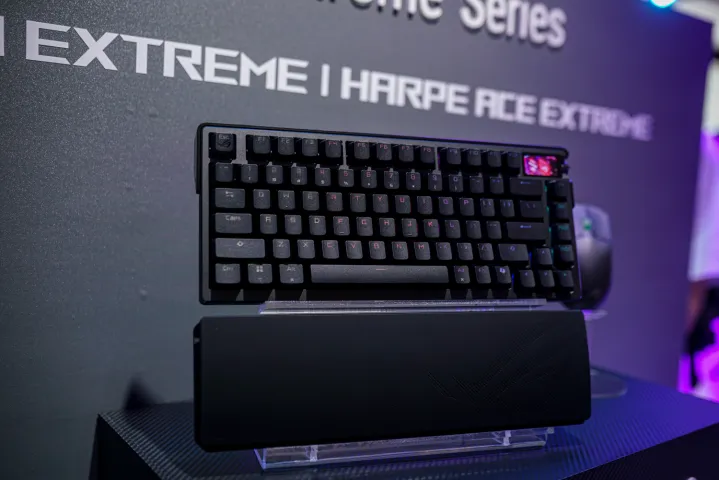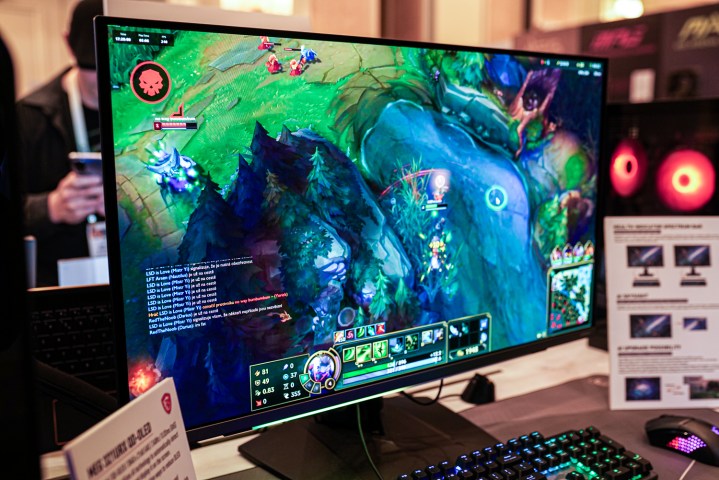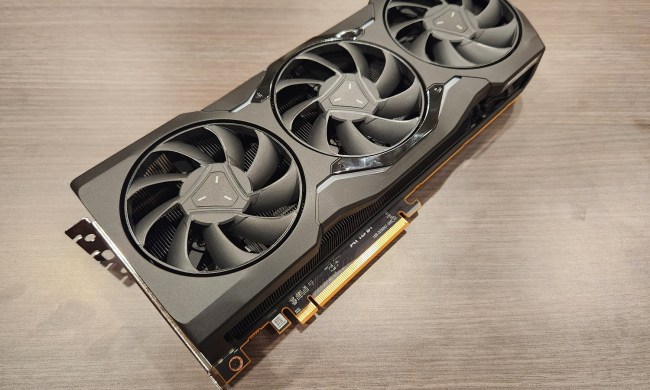
I’ve looked at a ton of PC gaming hardware this year already, but there’s a lot of time left in 2024. Between new generations of CPUs from AMD and Intel, innovative peripherals, and applications of AI in PC gaming that we haven’t seen before, there’s a lot I’m still looking forward to in the back half of the year.
We’ve hit the second phase of product releases for 2024, kicking off with AMD’s Ryzen 9000 CPUs arriving in July. As we get deeper into the year, there will undoubtedly be more products that we learn about. For now, though, here’s what I’m keeping an eye on throughout the rest of the year.
AMD Ryzen 9000

Depending on when you’re reading this, AMD’s Ryzen 9000 CPUs might already be out. Although we expected to see Zen 5 CPUs this year, AMD pushed up the release date. At the time of writing, these CPUs are releasing in a matter of weeks. There isn’t much to talk about when it comes to specs, with AMD keeping a familiar list of core counts and clock speeds from the Ryzen 5 9600X up to the flagship Ryzen 9 9950X. However, there’s a big difference when it comes to architecture.
Using TSMC’s N4 node, AMD claims that Ryzen 9000 brings an increase of 16% in Instructions Per Clock (IPC) on average, which is quite the leap. We’ve already seen some leaked benchmarks that back up that claim, with the Ryzen 9 9900X beating last-gen’s Ryzen 9 7950X in both single core and multi-core performance.
Those are some big claims, but we have to wait to see how Ryzen 9000 holds up once it’s actually here. The CPUs are reportedly arriving on July 31, but AMD hasn’t confirmed a release date yet. The big boon for them outside of performance is support for the AM5 socket. True to AMD’s word, it says it will continue supporting the AM5 socket that released alongside Ryzen 7000 CPUs, meaning you can slot a new Ryzen 9000 CPU into an older AM5 motherboard.
Asus ROG Azoth Extreme

Asus already had one of the best gaming keyboards money can buy with the Azoth, but it’s still upping the ante with the Azoth Extreme. True to the name, this is one extreme keyboard. It’s built out of the bones of the original Azoth, but Asus touched nearly every aspect of the keyboard. You’re still getting a gasket mount, but Asus is now using a carbon fiber switch plate along with three layers of sound absorption. The aluminum top shell now extends around the body as well, adding a bit of heft to the keyboard.
What really matters here, though, is the adjustable gasket. A switch on the bottom of the keyboard allows you to swap between a firm and loose typing feel by adjusting how stiff the gaskets are. Asus isn’t the first one to add such a feature to a keyboard, but it’s definitely the first to add it to a gaming keyboard. I don’t suspect you’ll go between the modes very often, but it’s nice that Asus is still giving gamers an easy way to adjust their typing experience without fully modding the keyboard.
Outside of the adjustable gasket, Asus updated the OLED display. It’s now a touch display, and it can display colors (the previous version was limited to black and white). There are also a few sets of metal feet, again adding even more premium touches to the keyboard.
I’ve already used the keyboard for a bit, but I’m excited to get my hands on it for an extended period of time. I know the Azoth is a great keyboard, but I’m really curious to see how the adjustable gasket affects the experience of owning the keyboard. Regardless, this is one to keep an eye on.
NZXT F-series single frame fans

We all hate PC fans. They look great, especially if you have some nice RGB fans, but installing each one, routing the tiny cables, and trying to deal with the rat’s nest that ensues is infuriating. NZXT’s F-series single frame fans look like the solution. As you probably picked up from the name, these are fans that put multiple blades in a single frame. Instead of a bunch of 120mm fans, you can install a single unit that’s 240mm, 280mm, or 360mm.
NZXT isn’t the first company to come up with this idea. Phanteks has single frame fans, but they’re expensive, and subjectively, they don’t look as nice as NZXT’s F-series design. Plus, NZXT makes CAM, which is one of the more useful PC tuning and lighting utilities available.
The fan (fans?) connect with a single 8-pin cable for RGB and PWM, keeping your rig clean. The real draw is the price, though. NXZT is asking $45 for 240mm, $50 for 280mm, and $70 for 360mm. Those aren’t bad prices considering you can easily spend more for individual 120mm fans.
Intel Arrow Lake

Intel has confirmed that its 15th-gen Arrow Lake CPUs are coming this year, but we still don’t know a ton of details about the chips. Intel hasn’t made any performance claims, revealed any specs, or so much as shared a model number. Arrow Lake is a major new generation for Intel, though, and it will define how AMD and Intel stack up for the next few years.
That’s because Intel is moving on from the LGA 1700 socket and Intel 7 node that it introduced with 12th-gen CPUs. Intel has confirmed it will use at least one node from TSMC, but it will likely use its own 20A node, as well. Intel’s 12th-gen CPUs felt like a revelation with the company finally moving onto a new process node. After some lukewarm CPUs like the Core i9-14900K, hopefully Arrow Lake can represent a similar leap in performance.
Given that AMD is first on the scene with Ryzen 9000, it will be very interesting to see how Arrow Lake stacks up later in the year. Ryzen 9000 should bring performance gains, but AMD isn’t making as radical of a shift as Intel is. We should know more about Arrow Lake before too long — rumor has it that Intel will discuss the CPUs at its Innovation event in September.
Nvidia G-Assist
Nvidia G-Assist isn’t actually a product, at least not yet. We saw the AI assistant in action at Computex, but for now, Nvidia says that it’s more of a tech demo than anything. Hopefully we’ll see G-Assist show up in some form this year, though. It has a lot of potential, applying AI to your PC locally in a way that makes perfect sense for PC gaming.
If you’re not up to speed, G-Assist is basically an AI assistant for your games. It doesn’t just give you hints or rephrase walkthroughs written by real people, though. It hooks into a game, and it can pull details from what you’re seeing on screen. It can see what’s in your inventory, explain stats, and provide suggestions for how to progress. All of this is contextual based on the game you’re running, not just some generic advice. Theoretically, a game developer could add just about anything to G-Assist, and that seems like the idea. Instead of an app that can do everything, G-Assist is a system that developers can apply to individual games.
Nvidia can definitely do a lot on its own, too. One feature it’s already shown off is G-Assist’s ability to see your system information. It can do things like track your frame rate and automatically plot it on a graph, automatically overclock your GPU, or even reduce the power draw of your GPU while maintaining a particular frame rate in games. There are a ton of applications for G-Assist, and I can’t wait to play around with it myself.
Hyte Thicc P60 Duo

Hyte’s Thicc Q60 floored me when I took a look at it earlier this year. It’s a fantastic cooler, but there’s one big problem with it — it’s expensive. The Thicc P60 Duo looks like a stripped-down version that will hopefully come in at a much cheaper price.
We don’t know how much cheaper the P60 Duo is yet, but Hyte has confirmed it will indeed be cheaper. Compared to the Q60, the big difference with the P60 is the water block. Instead of the 5-inch IPS display that you’ll find on the more expensive cooler, the P60 Duo comes with a standard water block with a bit of RGB lighting. I’m glad that’s where Hyte is cutting, too. Otherwise, the P60 Duo should provide the same cooling prowess that the Q60 delivered earlier this year.
Outside of the cooling, the P60 also functions as a primary node in the Hyte Nexus Link ecosystem, allowing you to power and control up to 18 fans and/or RGB strips just off the cooler. Given how impressive the Q60 was, I suspect the P60 Duo will be quite the popular cooler when it launches in September.
MSI MEG 321URX

I doubt I’ll end up recommending MSI’s MEG 321URX, but I’d be lying if I said I wasn’t looking forward to it. The monitor itself should be great. This is a 32-inch OLED display from MSI, using the same panel as MSI’s MPG 321URX. OLED is the least interesting part of this display, though. MSI says the displays packs an AI processor that will essentially allow you to cheat in games. You read that right.
Up to this point, MSI has shown off the MEG 321URX in League of Legends. The AI overlay can show you enemy positions that are offscreen, as well as display stats like your health through the built-in RGB lighting. MSI says it’s working to add the AI assistant to other games as well, such as Counter-Strike 2. I’m not against companies exploring different ways to apply AI to PC gaming, but a monitor that literally gives you what equates to a cheat in games? That’s pushing it a bit far.
Still, I’m very interested to see how the MEG 321URX plays out. Will it actually work? Will game developers ban it from competitive play? How will they even know? There are so many interesting questions that the MEG 321URX brings up just due to its existence, and I’m curious to see what impact it will have. I suspect the question most people will be asking, though, is this: How can the MEG 321URX justify its $1,700 list price? We’ll just have to wait until it’s finally here to get all of those answers.
Lian Li wireless RGB

Dealing with RGB lighting in a PC is a hassle, but Lian Li is simplifying the process. At Computex, it introduced an ecosystem of products that carry RGB lighting wirelessly. No more hunting around for a spare header on your motherboard or fussing with a hub to get all of your lights connected.
The system works through a USB receiver. Lian Li’s upcoming fans and light strips will include a wireless antenna in the product itself, which will hook up to the receiver and give you control over your lights. It’s a simple solution, and one that I’m surprised we haven’t seen prior to this point. Lian Li says the first wireless products will launch in the third quarter of the year, and I’m excited to see how they’ll work in practice.




